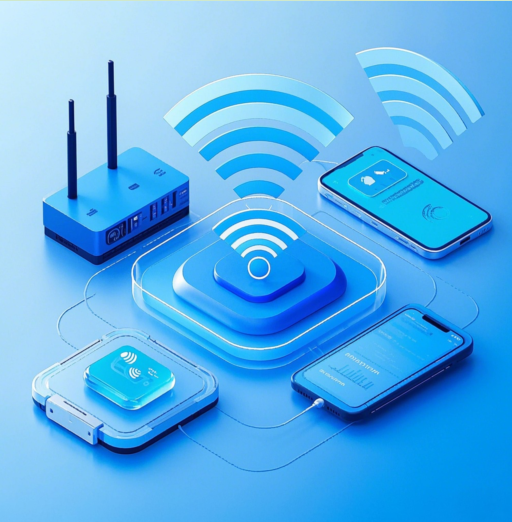The Key Role of LoRa Antennas in IoT Connectivity
Introduction: What is a LoRa Antenna?
LoRa (Long Range) is a wireless communication technology that enables long-distance data transmission with extremely low power consumption. A LoRa antenna is a critical hardware component that transmits and receives signals in LoRa-based networks. As the foundation of physical connectivity, LoRa antennas are instrumental in the effective deployment of IoT (Internet of Things) applications.
Why LoRa Technology is Ideal for IoT Applications
In comparison to traditional short-range technologies like WiFi and ZigBee, or cellular options like NB-IoT, LoRa stands out for offering a longer range (up to 15km in rural areas) with ultra-low power usage. This makes it the optimal choice for battery-powered IoT devices deployed in remote or hard-to-reach locations. A well-designed LoRa antenna significantly improves the performance and stability of such networks, ensuring uninterrupted data flow across devices.

Key Features of LoRa Antennas
LoRa antennas are designed to operate at specific frequency bands such as 433 MHz, 868 MHz (Europe), and 915 MHz (North America). Common features include:
- Polarization: Usually vertical or omnidirectional to accommodate diverse installations.
- Gain: Ranges between 2dBi and 9dBi depending on coverage needs.
- Designs: Available in whip, fiberglass, PCB patch, and embedded formats.
- Mounting Options: Magnetic base, wall-mount, pole-mount, or adhesive.
These characteristics influence signal strength, directionality, and environmental durability.
Application Scenarios of LoRa Antennas
- LoRa antenna for smart agriculture: Sensors in fields can transmit soil moisture, temperature, or crop health data over long distances to a central gateway without draining battery life.
- LoRa antenna for urban IoT: Street lighting systems, smart parking meters, and waste management units rely on stable LoRa communication to optimize city operations.
- LoRa antenna for industrial monitoring: Machines equipped with LoRa modules use antennas to report operating conditions or predictive maintenance alerts in factories or power stations.
- LoRa antenna for environmental monitoring: LoRa antennas enable real-time updates from sensors tracking air quality, water levels, or forest fire indicators, often from remote or elevated locations.
How to Choose the Right LoRa Antenna
Selecting the appropriate LoRa antenna depends on several factors:
- Indoor vs Outdoor: Outdoor fiberglass antennas offer rugged protection, while PCB antennas suit compact indoor devices.
- Directional vs Omnidirectional: Directional antennas focus the signal in one area, ideal for point-to-point links. Omnidirectional antennas distribute the signal evenly around them.
- Connector Types: Ensure compatibility with your devices (e.g., SMA, MCX, U.FL).
Partnering with an experienced supplier ensures proper matching for performance, environment, and compliance requirements.
Why Choose BBT ANTENNAS for Your LoRa Solutions
BBT ANTENNAS offers a wide range of OEM/ODM LoRa antennas tailored for IoT developers, solution providers, and integrators. Our strengths include:
- Custom antenna design services for your frequency and gain requirements
- Rich product catalog, including high-gain outdoor LoRa antennas, flexible PCB antennas, and embedded options
- Reliable performance validated by field deployments in agriculture, logistics, and utilities
As a trusted LoRa antenna supplier, BBT ANTENNAS supports prototyping, small batch customization, and mass production with consistent quality.
Conclusion
In the expanding landscape of IoT, LoRa antennas serve as a backbone of wireless communication. Their ability to support low-power, long-range connectivity makes them indispensable across agriculture, urban infrastructure, industry, and beyond. Choose BBT ANTENNAS for reliable, customizable LoRa antenna solutions that match your innovation needs.
Looking to improve your IoT coverage? Contact BBT ANTENNAS today to find the right LoRa antenna for your application.
